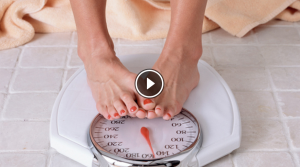The following is a post originally previewed on Little Rocks KTHV Channel 11 Medical Monday and written for askdoctorkay.com by Dr. Kay Chandler, medical director for Ideal Health Now. Many of our clients (excuse us for a moment men) will be interested in the common “muffin top” phenomenon.
Watch the Video Here
As a gynecologist, one of the most common complaints I hear from my menopausal and perimenopausal patients is “I’m gaining weight – and it’s all right here” (as she points to her mid-section). The phrase that often follows is “and I’m not doing anything different”. Of course anyone can gain weight in the abdominal area, but it does seem to be more common for women during that transition into menopause – even when they don’t seem to be eating or exercising any differently. Here are some common questions and hopefully helpful information about those dreadful “muffin tops” and how to get rid of them.
 Does Menopause cause weight gain? What about the “Muffin top”? Actually there is no evidence that menopause causes weight gain. Aging and lifestyle seem to be the main culprits. Metabolism does typically slow with age. Lean muscle mass decreases and body fat increases. So the fact is – as we age, we have to do something different – exercise more/ eat differently – or we will gain weight. There is evidence, though, that as women transition into menopause – and estrogen and progesterone levels drop – there is a change in body fat distribution from their hips, thighs and buttocks to their abdomen. So even if total weight doesn’t change, many women accurately notice “I’m losing my waist!”
Does Menopause cause weight gain? What about the “Muffin top”? Actually there is no evidence that menopause causes weight gain. Aging and lifestyle seem to be the main culprits. Metabolism does typically slow with age. Lean muscle mass decreases and body fat increases. So the fact is – as we age, we have to do something different – exercise more/ eat differently – or we will gain weight. There is evidence, though, that as women transition into menopause – and estrogen and progesterone levels drop – there is a change in body fat distribution from their hips, thighs and buttocks to their abdomen. So even if total weight doesn’t change, many women accurately notice “I’m losing my waist!”
Are there any health risks to increasing abdominal weight? How about guidelines for a woman to use to know if she is at risk? First, it’s important to differentiate between subcutaneous (pinchable fat beneath the skin) and visceral (fat the is deeper in the abdomen surrounding the abdominal organs). The first kind is really harmless even though most of us don’t like it. If you gain more than 2 to 5 pounds, its likely to go deeper into the abdomen and create too much visceral fat. That type of fat is often called “toxic fat” because excessive amounts of visceral fat increase inflammation in the body that ultimately contributes to conditions such as heart attack, stroke, diabetes and even cancer. To know if you have too much visceral or “toxic” fat, take a tape measure and measure around your waist at the level of your belly button. For a woman, if it is 35 or over (40 or over for men), you are at risk and you need to take action to prevent the development of associated health problems.
Is it better to take hormones or not to combat increasing abdominal weight in menopause? Whether or not to use hormone replacement depends on a woman’s symptoms, how much they affect her quality of life, her health history and her family history. Many of my patients have heard that hormones make women gain weight. There is really no evidence to support that. In perimenopausal women, I have found that correcting a hormone imbalance may make her weight loss efforts more productive, but just taking hormones does not typically cause the weight to just fall off either.
What are some ways to get rid of “the muffin top”? My answer to that is three fold – change your diet, change your activity and change the way you think. In changing your diet, I have found that the best thing you can do is to eat real, unprocessed food, eat lots of vegetables, plenty of protein and drink plenty of water. There seems to be a real push toward cooking and eating at home more and I think that is for good reason.
For many people, having a plan, journaling and having accountability is crucial. About three years ago, when I decided that it was time to get rid of the muffin top (as well as the health problems that I was beginning to have along with it – high blood pressure and cholesterol), I turned to the Ideal Protein plan because it has all of those components, involves an uncomplicated plan and (as I saw in my patient who had done it) offered predictable, repeatable results. The key is to find something that you can stick with.
As far as activity goes, we know that people who move around more tend to have faster metabolisms. Exercise improves insulin receptor sensitivity which can reduce the incidence of diabetes and fat storage. Cardio, weight lifting and core work are great additions to a healthy diet in maintaining a healthy weight and waistline.
Lastly, it’s important to change the way you think. Take some time every day to visualize your reward. Close your eyes and see yourself without the bigger belly. What do you look like? What are you wearing? How much lighter do you feel? It’s important for you to be able to see yourself in that way AND to love and respect yourself enough to believe that you are worth making the changes that you need to achieve your goals.



Leave a Reply